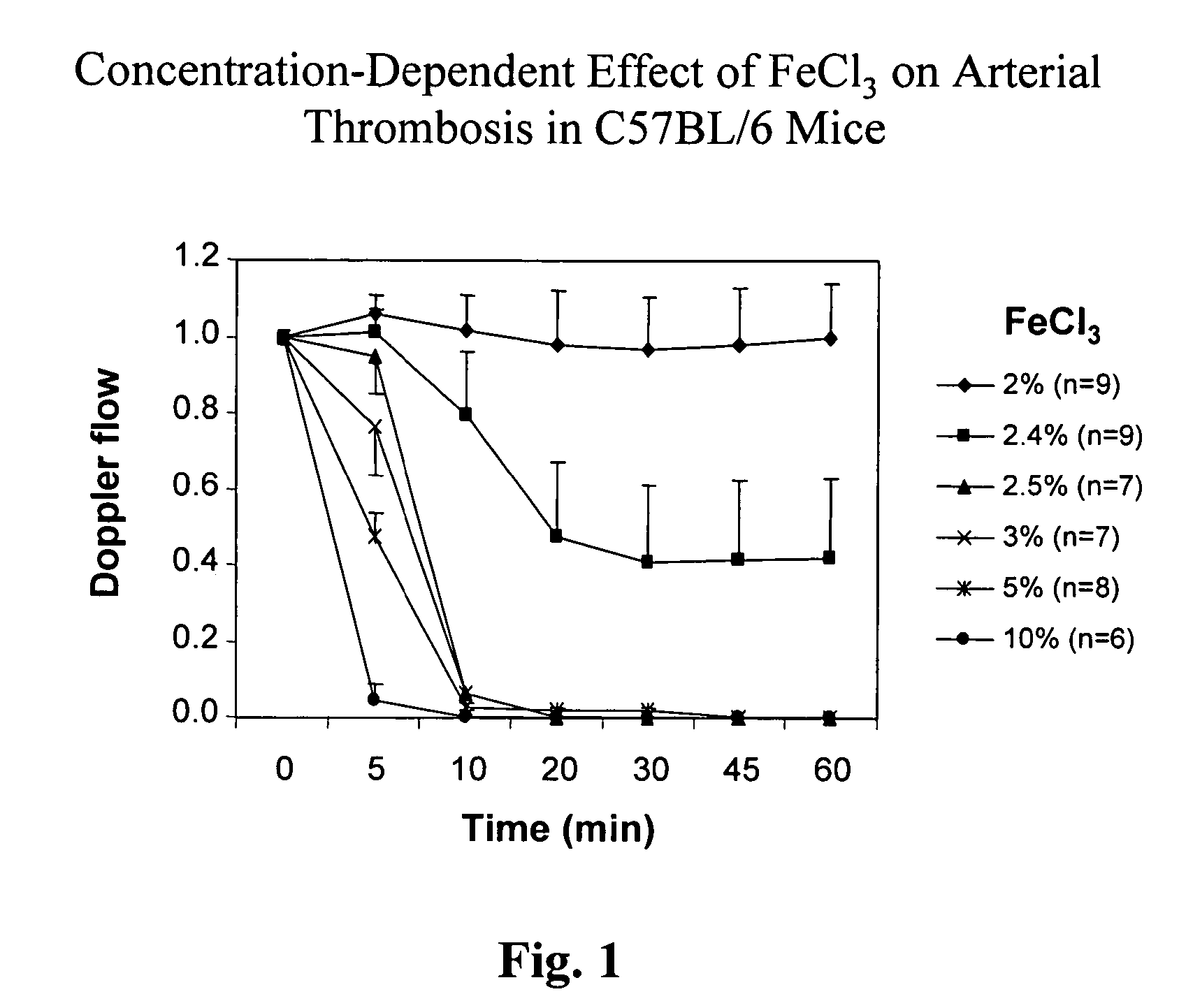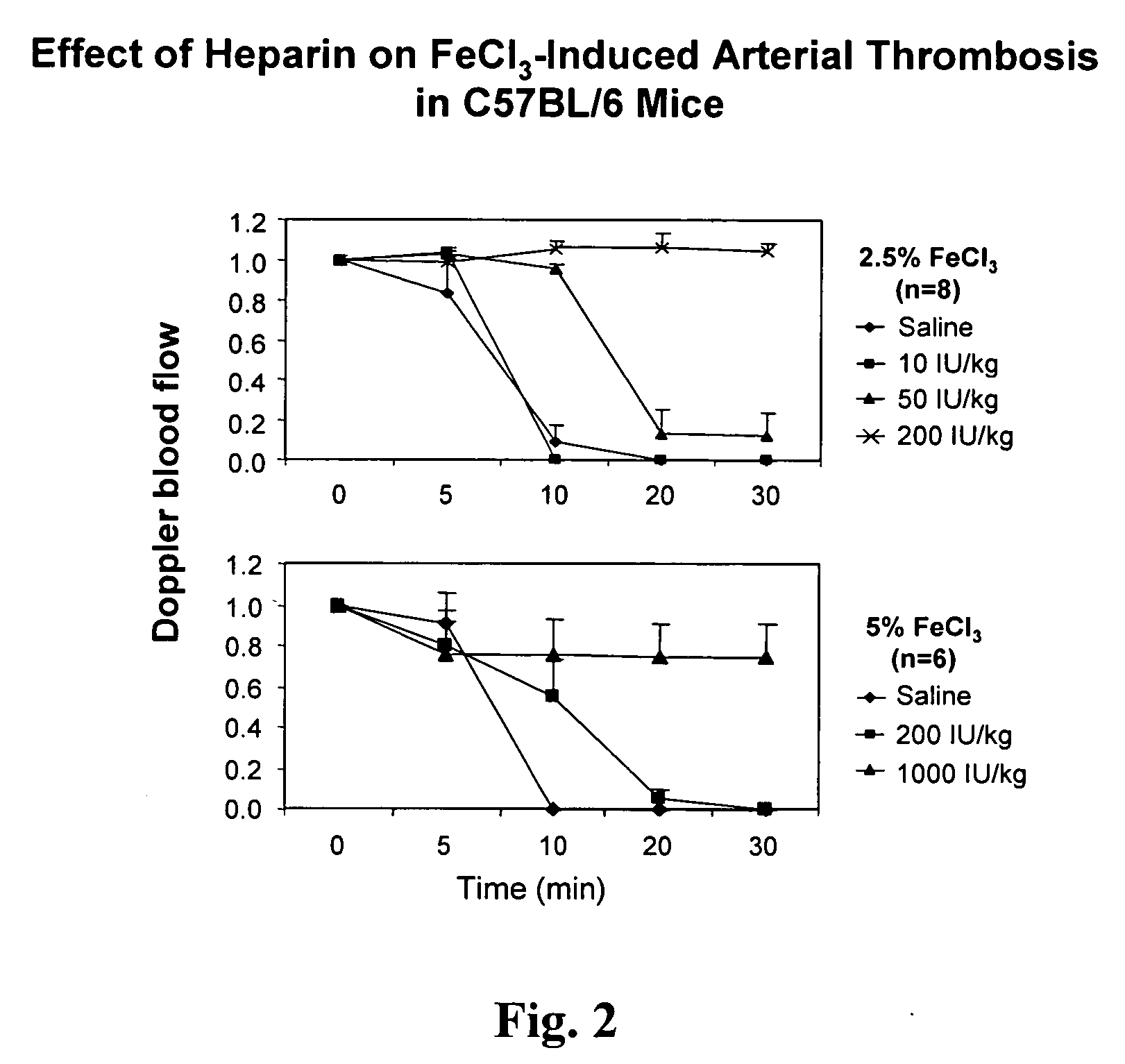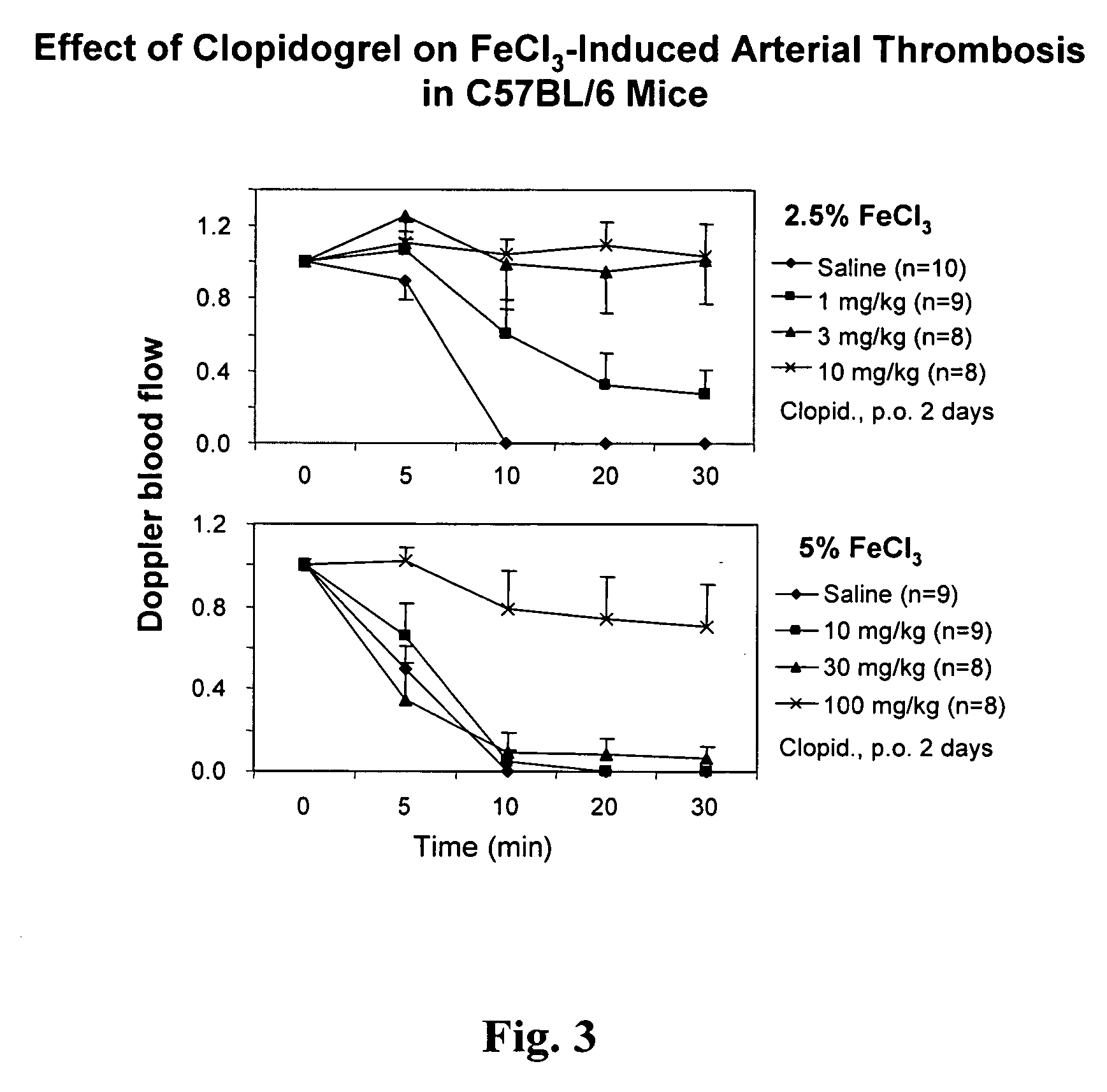Thrombosis animal models and their use in drug discovery and development
- Summary
- Abstract
- Description
- Claims
- Application Information
AI Technical Summary
Benefits of technology
Problems solved by technology
Method used
Image
Examples
example 1
Concentration-Dependent Effect of FeCl3 on Arterials Thrombosis in Mice
[0048] Concentration-dependent effects of FeCl3 (2-10%) on thrombus formation, as reflected by the blood flow measurement, in the carotid artery were demonstrated in C57BL / 6 mice, as shown in FIG. 1. No reduction in blood flow was observed following 2% FeCl3 treatment. At 2.4% FeCl3 concentration, 2 out of 9 animals were completely occluded at 10 min and 6 animals occluded at 30 min, while 3 animals remained vascular patency throughout the time course (up to 60 min). A threshold stimulus was reached at 2.5% FeCl3, showing a marked reduction in blood flow 10 min. post treatment in every animal tested. A robust difference in blood flow was observed at 5 min following the treatment of various FeCl3 concentrations (2.5-10%), while almost all the vessels were completely occluded at 10 min.
example 2
Effect of Various Agents on FeCl3-Induced Arterial Thrombosis in Mice
[0049] To demonstrate the utility of the inventive arterial thrombosis models for antithrombotic drug assessment, various agents, including heparin (an anticoagulation agent), clopidogrel (a selective P2Y12 antagonist), aspirin (a cyclooxygenase / TXA2 inhibitor), cangrelor (a selective P2Y12 receptor antagonist) and MRS2179 (a selective P2Y1 antagonist) were used in 2.5 and 5% FeCl3-induced arterial thrombosis. FIG. 2 shows the effect of heparin on FeCl3-induced arterial thrombosis.
[0050] Vascular patency was maintained in mice treated with 200 IU / kg heparin, i.v. in the 2.5% FeCl3-induced thrombosis; while an extremely high concentration of heparin (1000 IU / kg) was required to inhibit 5% FeCl3-induced thrombosis (FIG. 2). Similarly, vascular patency was maintained in some of 1 mg / kg clopidogrel (an selective P2Y receptor antagonist), p.o. treated animals and all of 3 mg / kg clopidogrel treated animals in the model...
example 3
Gunmetal Mouse Model
[0052] Gunmetal (gm) mice exhibit reduced rates of platelet synthesis and decreased platelet α- and δ-granule contents. Its genotype has been associated with a mutation in the Rab geranylgeranyl transferase (Rabggtase) gene that encodes an enzyme attaches geranylgeranyl groups to Rab proteins. Evaluation of the effect of gunmetal on thrombosis using a murine model of ferric chloride-induced carotid artery thrombosis was conducted.
[0053] Significant protection was observed in gm / gm mice in 5% ferric chloride-induced arterial thrombosis compared to its + / gm and + / +littermates. The level of this protection in gunmetal mice was similar to that following the treatment of a high dose of P2Y12 antagonist clopidogrel (30-100 mg / kg) in C57BL / 6 mice. Tail transaction studies showed a dose-dependent effect of Rabggtase gene in bleeding time, with 4- and 12-fold increase in + / gm and gm / gm mice over wild-type littermates, respectively.
[0054] C57BL / 6J mice herterozygous for...
PUM
 Login to View More
Login to View More Abstract
Description
Claims
Application Information
 Login to View More
Login to View More - R&D Engineer
- R&D Manager
- IP Professional
- Industry Leading Data Capabilities
- Powerful AI technology
- Patent DNA Extraction
Browse by: Latest US Patents, China's latest patents, Technical Efficacy Thesaurus, Application Domain, Technology Topic, Popular Technical Reports.
© 2024 PatSnap. All rights reserved.Legal|Privacy policy|Modern Slavery Act Transparency Statement|Sitemap|About US| Contact US: help@patsnap.com










